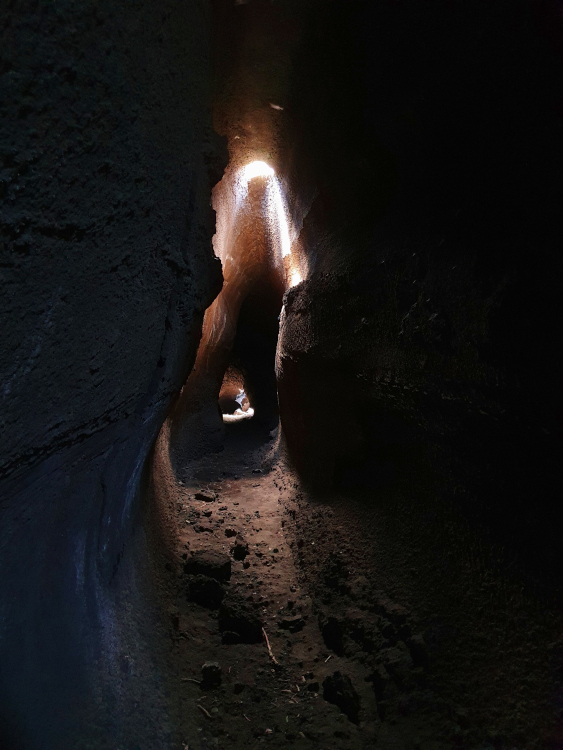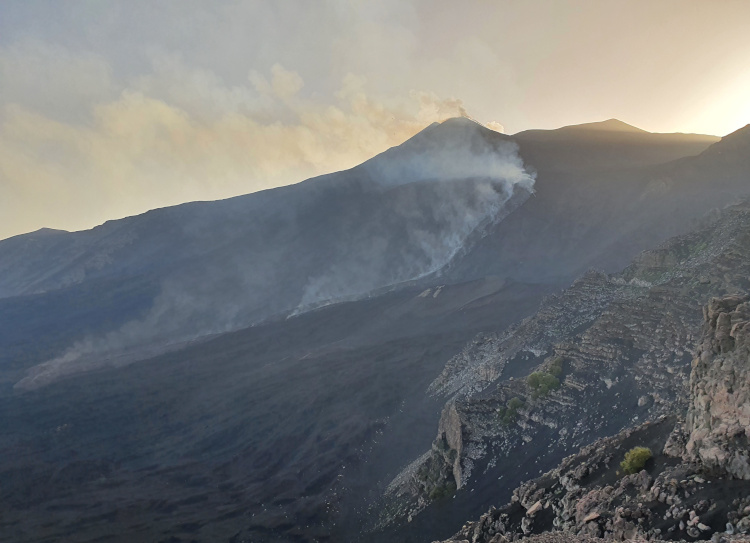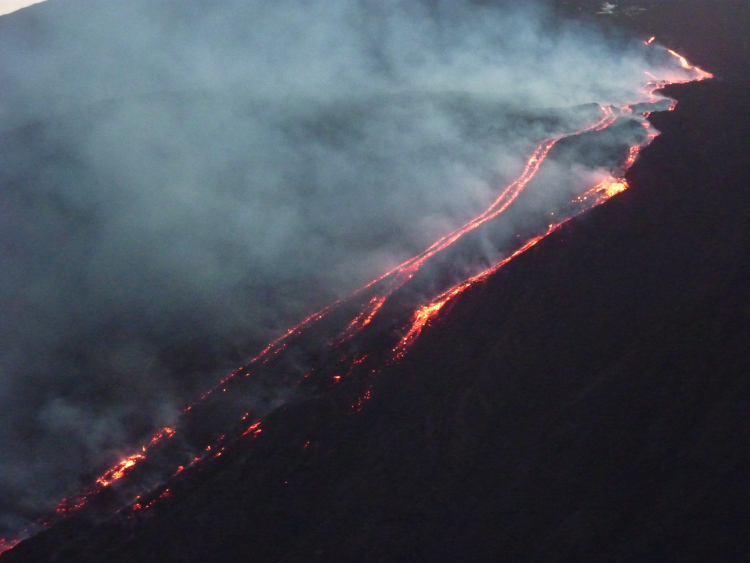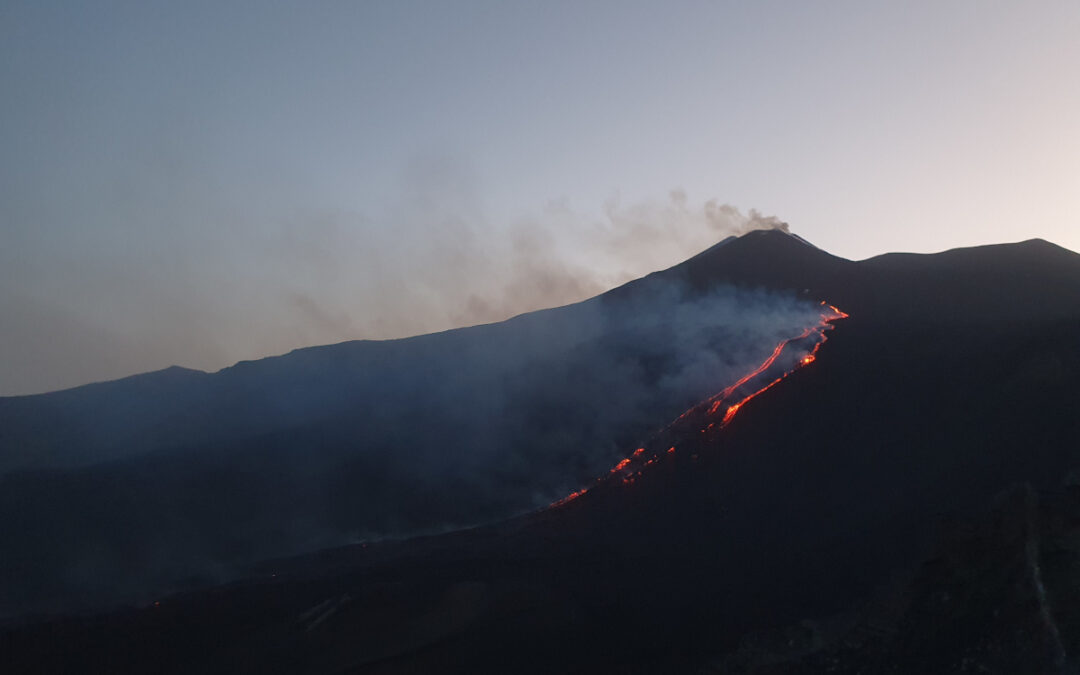Since 13.5.2022, the south-eastern crater has been active again. At the foot of the cone, on its northern side, a fissure has opened. A lava flow has been pouring into the Valle del Bove, the huge valley on the eastern side of Etna.
This is a subterminal eruption, i.e. an eruption of a main crater, but not at the very top (terminal eruption), but in the immediate vicinity.
Last night we were able to experience this natural spectacle live together with EtnaWay.
Meeting point was at 16:30 at the Rifugio Citelli on the north side of Etna. From this side you can best observe the current eruption.
Fortunately, at this time of day it is no longer as hot as during the day.
At the Rifugio we bought provisions (a panino and also 1.5 litres of water per person).
Ascent through the birch forest
First we walked up through a forest. There are endemic birches growing here, that is, a special kind of birch found only on Mount Etna.
The first stop for explanations was at a round structure made of stones. This “hut” was once covered with straw and was built for protection by shepherds who tended their sheep and goats here. They can be found all over Etna.
We continued uphill and downhill through the birch forest. It was pleasantly cool in the shade of the trees, so the climb was not difficult.
After about an hour we reached the Serracozzo Grotto. This cave is one of the approximately 190 lava tunnels that exist or are known on Etna. There are probably many, many more lava tunnels, but we haven’t discovered them yet.
Now we need our helmets and headlamps to explore the cave.

Then we continued uphill. The higher we get, the smaller the birch trees become. We also see large green cushions with small, inconspicuous flowers all over the slope. They look cosy, but they have sharp thorns!
The tour is planned in such a way that you do the whole ascent during daylight. This is easier and so we could still enjoy the view all the way to the sea and recognise the different geological formations of Etna and learn something about them.
View of the current eruption of Mount Etna
Still in daylight, we reached the edge of the Valle del Bove. The sight was overwhelming: on the eastern side of Etna this huge valley gapes, the walls of the valley drop vertically down to 1000 metres in places. The valley floor is a sea of solidified black lava and in the middle of it flows a river of lava, the current eruption of the south-eastern crater. In the daylight you cannot see the red of the lava, only the smoke of the lava flow indicates the activity.

At the edge of the valley we climbed even higher. We kept the lava flow in view all the time. Suddenly we see the first small patch of red. As we continue walking and it gets darker and darker, more and more red appears.
At about 2200 metres we sat down and ate our panino. Afterwards, the guide handed out pasta di mandorla, a sweet Sicilian speciality.
The sky is now dark. The south-eastern crater stands out only slightly against the night sky. Behind it we can see the central crater, formerly the only main crater of Etna.
The lava rivers are now bright red. They branch out several times, lava chunks come loose and roll down into the valley. At the bottom of the valley, where it becomes flatter, the red lava flow stops, the lava comes to a halt here and thus cools down.

Etna’s lava is about 1080 degrees when it reaches the surface. At 800 degrees, it becomes solid and black. So even if you see solid, black lava on Etna, you should never touch it when it is still fresh!
Descent
Around 10 p.m. we made our way back. Now we need our headlamps again.
We walk away from the edge of the valley. The soft volcanic sand makes it easy to go down. We pass a crater and 2 vents from the 1928 eruption.
After a good hour we arrived back at the car park.
We will certainly remember this evening for a long time!
